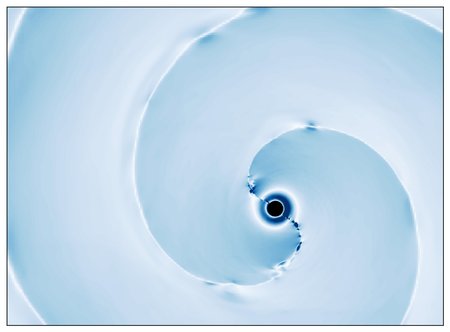NASA’s Artemis 1 Orion spacecraft is headed to the moon on a first-of-its-kind test flight and you may be able to see a telescope’s view of the spacecraft online tonight (Nov. 16).
The Orion spacecraft launched toward the moon today at 1:47 a.m. EST (0647 GMT) from NASA’s Kennedy Space Center in Florida, riding the agency’s first Space Launch System megarocket into orbit. A few hours later, the rocket’s upper stage fired its engine to send the Artemis 1 Orion capsule on its trip around the moon. That’s where tonight’s live webcast comes in.
Astrophysicist Gianluca Masi of the Virtual Telescope Project in Ceccano, Italy, will attempt to stream live telescope views of Orion online in a livestream event scheduled for 10:30 p.m. EST (0330 Nov. 17 GMT). You can watch it free in the window above or directly from the Virtual Telescope Project website (opens in new tab).
Artemis 1 launch photos: Amazing views of NASA’s moon rocket debut
Live updates: NASA’s Artemis 1 moon mission

“The launch of Artemis 1 is much more than us going to the moon again. It is the beginning of a new era,” Masi wrote in a statement. “Because of the historic importance of this event, we decided to try something never done (to our knowledge) before: we will share live images, online, of the Orion spacecraft on its way to the moon after its launch.”
Related stories:
It is not certain that the Virtual Telescope Project will be able to spot the Orion spacecraft. First, the weather in Italy must cooperate, then Masi must be able to spot the spacecraft, which is a relatively small, fast-moving target in the void of space, with his telescope.
“We will do our best to show you the Artemis 1 Orion spacecraft on its way to the moon, as soon as it will be visible from Italy,” Masi wrote. “We will assume the launch and trajectory data provided by the JPL Horizons / Solar System Dynamics services, properly imported in our robotic telescopes to track this extremely demanding target at our best.”
Email Tariq Malik at tmalik@space.com (opens in new tab) or follow him @tariqjmalik (opens in new tab). Follow us @Spacedotcom (opens in new tab), Facebook (opens in new tab) and Instagram (opens in new tab).


